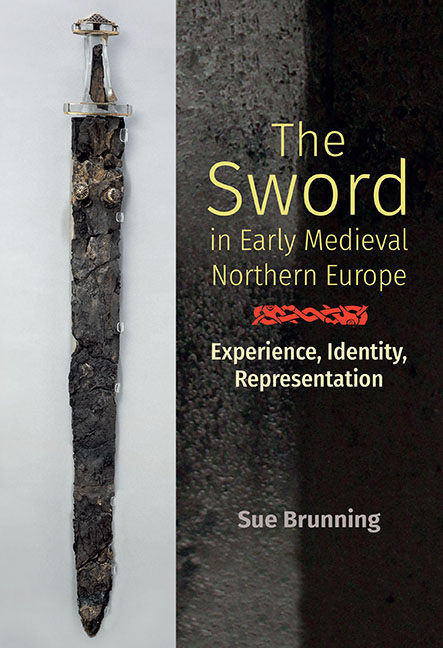Summary
Hundreds of images of swords survive from Anglo-Saxon England. They adorn metalwork, stone sculpture, carvings, manuscripts, embroideries and coins, in both secular and religious contexts. They are valuable not only as contemporary illustrations of these weapons but also as informants on their social and cultural significance. For early medieval audiences immersed in this imagery, it functioned actively by conveying, creating and influencing ideas while also provoking physical and emotional responses. Modern viewers, however, are so removed from the social, cognitive and visual contexts in which these images were made that their spectrum of meanings can be hard to reach. Experts in visual culture have risen to the challenge by developing approaches to recover some of those meanings. One is iconography, the study of the content and meaning of representational (as opposed to ornamental) art – making it ideal for analysing depictions of artefacts. This chapter adopts a broadly iconographic approach to sword imagery, alongside a careful eye on context and contemporary artistic conventions. It uses a body of Anglo-Saxon and comparative Scandinavian images drawn from published and publicly accessible resources which, while not exhaustive, is large and diverse enough in medium, provenance and date to support meaningful analysis.
The corpus contains several biases. First, a fraction of the early medieval artistic record survives today. Countless images were made upon perishable materials that seldom endure the centuries. Literary references to narrative embroideries hint that the Bayeux Tapestry and fragments from Milan in Italy and Oseberg and Överhögdal in Scandinavia were less rare than they seem today (Nos. 1–4), while accounts of paintings suggest that some types of medium have failed to survive at all. Manuscripts exist in quantity but many have been lost over centuries of conflict and accident: the 1731 fire in the Cotton Library, which claimed a unique Life of King Alfred and singed the sole existing Beowulf manuscript, being a brutal example. Second, regional and temporal differences shape the image corpus. More depictions of swords survive from England than Scandinavia, on different media and at different times: stone sculpture was produced in England from the seventh century but in Scandinavia only on the Swedish island of Gotland before the tenth, while manuscripts were not made there at all during the period. Local variations exist too, with Sweden furnishing more images than anywhere else in Scandinavia.
- Type
- Chapter
- Information
- The Sword in Early Medieval Northern EuropeExperience, Identity, Representation, pp. 18 - 58Publisher: Boydell & BrewerPrint publication year: 2019



